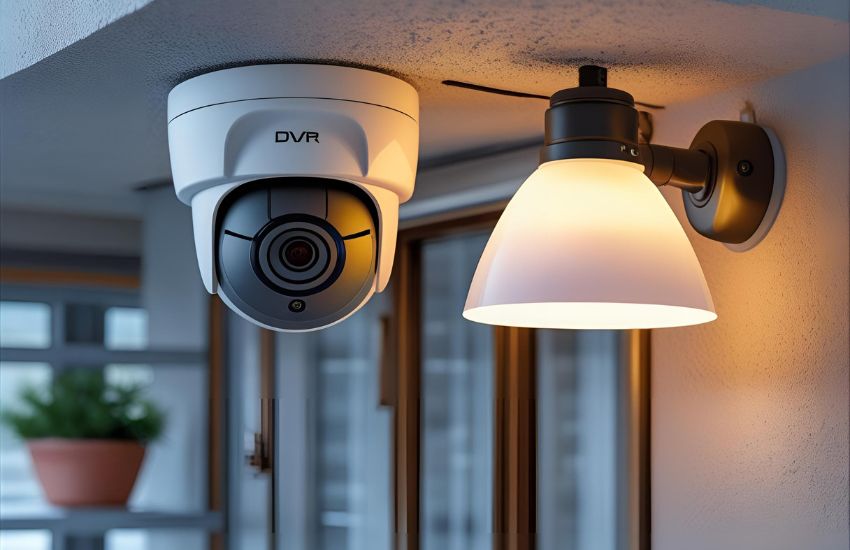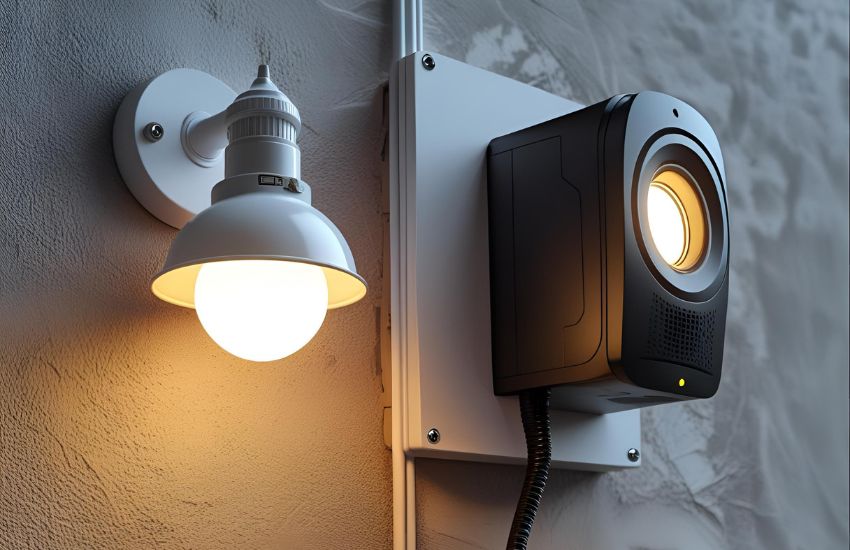Controlling a light via the DVR alarm output represents a powerful method to automate security systems and respond instantly to alarm events. When your DVR’s alarm output is properly configured, it can trigger external devices such as lights, creating an immediate visual deterrent upon detecting motion or other alarm conditions. This integration between your DVR and lighting not only enhances the effectiveness of your camera system but also allows you to manage security more proactively.
To control a light via DVR alarm output, first configure the DVR’s alarm output settings to activate when motion or an event is detected. Connect the alarm output to a relay controlling the light. When the alarm triggers, the relay switches the light on, providing automated illumination for enhanced security and real-time alert signaling
In this blog, you will learn the step-by-step process of connecting and configuring your DVR alarm output to control lighting devices effectively. We will explore key concepts like alarm relay activation, wiring considerations, and practical setup tips to maximize your security automation.
Understanding DVR Alarm Output and Relay Configuration for Triggering Lights Automatically

To effectively control a light via DVR alarm output, you first need to understand how the alarm output and relay system within your security setup function. When an alarm is triggered—whether through motion detection or camera alarm input—the DVR sends a signal via its alarm output port. This output acts as a switch, enabling connected devices like a strobe light or alarm light via DVR alarm output to activate immediately.
How Alarm Output Works in DVRs and NVRs
DVRs and IP camera NVRs, including popular brands like Viewtron CCTV DVRs and IP systems, offer multiple alarm output ports. These ports connect to external devices through relay switches. When the alarm is triggered, the relay closes the circuit, allowing power to flow to the connected device, such as a strobe light. This setup lets you remotely trigger an alarm light or other warning signals automatically, enhancing your surveillance response.
Configuring Relay Settings to Trigger Lights
To trigger an alarm light via DVR alarm output, you must configure the relay settings correctly in your DVR’s interface. This involves assigning the alarm output to specific alarm events, such as camera alarm detection or alarm recording start. By doing so, you ensure that whenever your security camera systems detect suspicious activity, the alarm output activates, turning on the connected strobe light or alarm light via DVR alarm output without manual intervention.
Wiring and Compatibility Considerations
Proper wiring is essential to link the DVR alarm output to your lighting devices safely and effectively. You should verify compatibility between your DVR, the relay module, and the alarm light. Using quality cables and ensuring correct voltage and current ratings will guarantee reliable operation when the alarm is triggered. Integrating your Viewtron security camera DVR or similar devices seamlessly with lighting enhances overall security by providing instant visual alerts.
See more about…Security DVR NVR Backup
How to Enable Object Detection and Camera Alarm Recording for Smarter Security Automation

To enhance your security setup, enabling object detection and camera alarm recording is essential for smarter automation. Whether you use an IP camera NVR or traditional Viewtron security camera DVRs, the process involves configuring your system to activate alarms and record footage automatically when suspicious activity is detected. Many modern IP camera NVRs have alarm capabilities that allow you to precisely select the alarm triggers and customize responses based on your needs.
Begin by accessing the live security camera view through your device’s interface or mobile app. This lets you monitor your cameras in real time and configure settings efficiently. When setting up object detection, you can specify zones or types of movement that should activate the alarm. This helps reduce false alarms and ensures your system responds only to relevant events. After defining these parameters, configure your DVR or NVR to start camera alarm recording automatically when the alarm is triggered.
You will also need to configure additional alarm devices such as sirens, buzzers, or SMS alerts to create a comprehensive security response. Most Viewtron DVRs and IP camera NVRS support these features, including alarm block options that prevent repeated triggering within short intervals. Power over Ethernet (PoE) cameras, often AI-enabled, simplify installation by combining power and data over a single cable, typically running on 12V DC.
See more about…IP Camera Alarm Output
Conclusion
As a managing partner of CCTV camera solutions, you understand the critical importance of configuring your security system to its fullest potential. By learning how to activate and configure object detection effectively, you can minimize false alerts and enhance overall system reliability. With the ability to select the alarm response and activate devices such as sirens, buzzers, and SMS notifications, you can ensure a rapid and well-coordinated security reaction. Using modern Viewtron DVRs and PoE-enabled cameras powered by 12V DC, you can integrate external devices seamlessly for comprehensive protection. Features like alarm block help prevent repetitive triggers, allowing you to maintain control and efficiency. Additionally, managing your system remotely through a mobile app empowers you to stay connected and respond swiftly. As a partner of CCTV camera pros, your expertise in configuring these advanced capabilities will significantly improve your video surveillance strategy and protect your premises with confidence.
See more about…Search Surveillance Video by Event on Viewtron DVRs
Frequently Asked Questions (How to Control a Light via DVR Alarm Output for Enhanced Security Automation)
How to connect DVR to alarm system?
To connect a DVR to an alarm system, link the DVR’s alarm input/output ports with the alarm panel using proper wiring. Configure the DVR settings to trigger alarms on motion detection or specific events. This setup enables the alarm system to activate sirens, lights, or notifications when the DVR detects unusual activity, enhancing overall security.
What is alarm output in a CCTV camera?
Alarm output in a CCTV camera is a feature that allows the camera to trigger external devices, such as sirens, lights, or alarms, when motion detection or an event occurs. It provides an extra layer of security by alerting users in real time and deterring intruders. The output is usually connected through relay terminals on the camera.
What is alarm output on Hikvision?
Alarm output on Hikvision devices is a relay interface that allows the system to trigger external security equipment when an alarm event occurs. It can activate devices like sirens, lights, or door locks in response to motion detection, intrusion, or other configured events. This enhances security by providing real-time alerts and physical deterrents.
How to enable alarm in Hikvision DVR?
To enable alarm in a Hikvision DVR, access the main menu and go to Configuration > Event > Basic Event. Select Alarm Input and enable it. Configure the alarm type, trigger actions (like recording, snapshot, or buzzer), and link it to cameras if needed. Save the settings, and the DVR will activate alarms when triggered.
